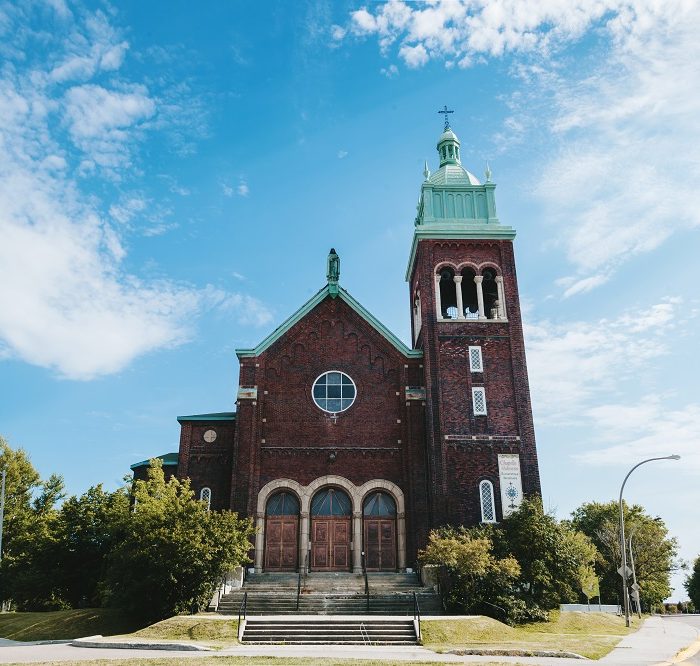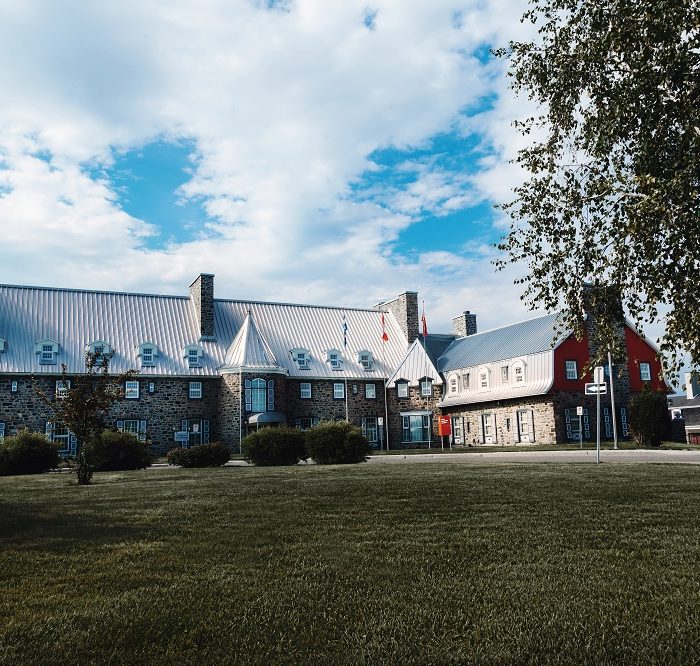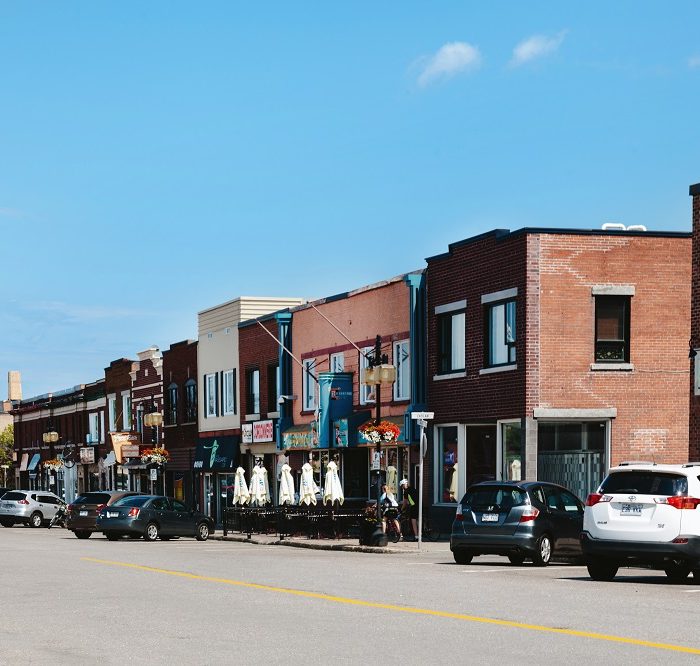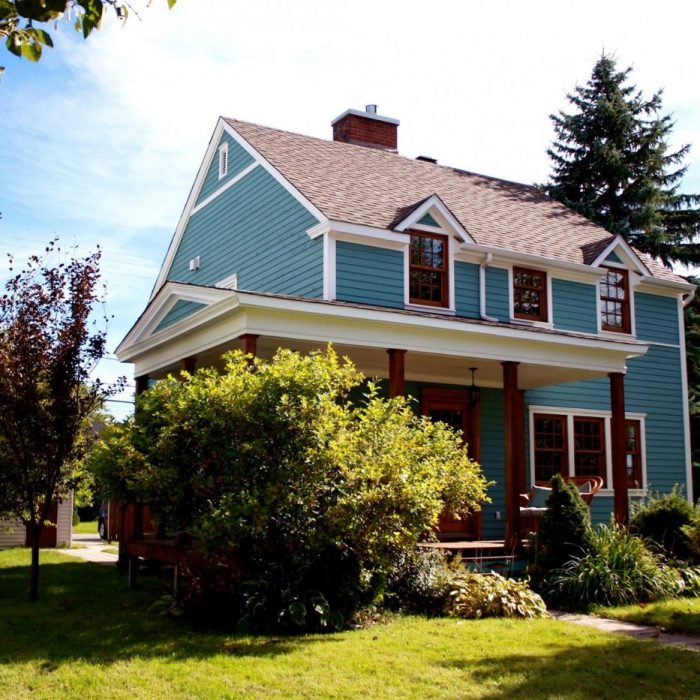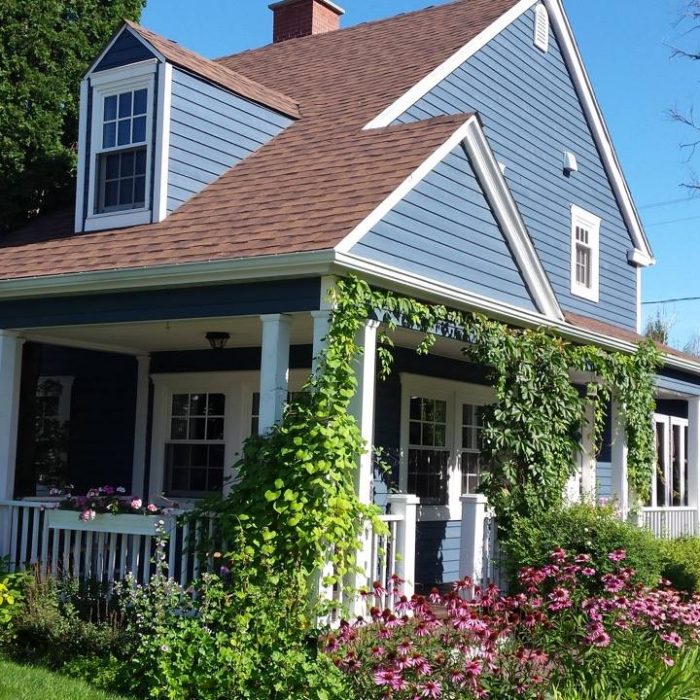The first and the last
The city of Arvida stands out by its uniqueness as a socio-industrial utopia. It represents the marriage of an industrial project and a social project marking the culmination of nineteenth- and twentieth-century town planning theories, as well as the result of decades of research on working-class housing, new towns and planned industrial cities. It is the first to gather such scale of urban planning knowledge, and its development was an all-time high never to be matched.
Contemplated and planned by renowned urban planners and architects, the city of Arvida reflects a synthesis in the planning and construction of industrial cities. Inspired by American, Nordic and French Canadian homes, the Arvidian habitat is diverse, modern and egalitarian. It is indeed a non-segregated environment composed of detached, single-family homes, of relatively comparable size, which are offered for sale by leasing. This system allows all workers or inhabitants to become owners.
Through its creators, the Aluminum Company of Canada has attempted to conceptualise an ideal society where life is good. The idea was to offer appropriate housing in an aesthetic, cultural and economic environment, thus encouraging the establishment and the development of the residents.
Recognising Arvida’s heritage
There are four levels of heritage recognition: municipal, provincial, national and global.
Municipal recognition
The citation of a heritage property is a special protective measure available to the municipality under the Cultural Heritage Act. Its objective is to ensure the preservation and enhancement of any heritage building or heritage site that is of public interest. Arvida has three heritage buildings, seven heritage sites and one catalogued site.
Heritage buildings
1) The Sainte-Thérèse-de-l’Enfant-Jésus Church (1999) (in French)
2) The aluminum bridge (2005) (in French)
3) The old Arvida Market (2013) (in French)
Heritage sites
1) Arvida’s institutional hub (2001) (in French)
www.patrimoine-culturel.gouv.qc.ca/rpcq/detail.do?methode=consulter&id=97774&type=bien#.WN6xSm_hAkI
www.patrimoine-culturel.gouv.qc.ca/rpcq/detail.do?methode=consulter&id=107384&type=bien#.WN6xTG_hAkI
www.patrimoine-culturel.gouv.qc.ca/rpcq/detail.do?methode=consulter&id=107381&type=bien#.WTBgQ-vhCUk
2) Saint-Jacques Church (2006) (in French)
3) Saint-Mathias Church (2006) (in French)
4) The city built in 135 days (2010) (in French)
5) The Manoir du Saguenay neighbourhood (2010) (in French)
6) The Neilson Street area (2010) (in French)
7) Downtown Arvida (2017) (in French)
Catalogued site
1) The Arvida aluminum complex (in French)
Provincial recognition
Under the Cultural Heritage Act, the government may, on the recommendation of the Minister of Culture and Communications, designate as a heritage site a territory whose knowledge, protection, enhancement or transmission is of public interest. Arvida is the 13th designated heritage site in Quebec.
National recognition
National recognition is attributed to a site, building or other place of national historic interest or significance, including buildings or structures that are of national interest due to their age or architecture. Under the Historic Sites and Monuments Act, Arvida was designated a national historic site in 2012.
Global recognition
Global recognition aims at encouraging the identification, protection and preservation of the world’s cultural and natural heritage considered to be of exceptional value to humanity. In January 2017, the City of Saguenay, with the support of its territorial partners and local communities, submitted Arvida’s candidacy to the list of World Heritage Sites in Canada.
CORPA
Established in 2010, the Committee for the recognition of Arvida’s heritage value (CORPA) is an organisation of people from diverse backgrounds whose mission is to support and encourage efforts aimed at protecting, enhancing, promoting and passing on the Arvida legacy. In this sense, CORPA is committed to the conservation, understanding and appreciation of the cultural landscape and the built heritage of Arvida. It aims to foster understanding of the significant importance of Arvida in the development of architecture and city planning as well as in human history at local, national and international levels.
The Ambassadors Club
The Arvida Ambassadors Club, composed of 55 members, was created by CORPA with the purpose of extending the scope of its outreach and awareness work beyond borders. Arvidians by birth, adoption or by heart, Ambassadors are for the most part known personalities on the national or international scene. Their function is to understand the history of the industrial city of Arvida and the process of heritage recognition. In addition, they are to be knowledgeable about, and to keep abreast of any actions in the process of heritage recognition, as well as to support, encourage and promote the process in their milieu.
Renovating one’s Arvida heritage home
Do you want to renovate your heritage home? Here are some useful tools.
Renovating a heritage property (in French)
Grant programs (in French)
Practical guide to help you renovate (in French)
Planning regulations (in French)

